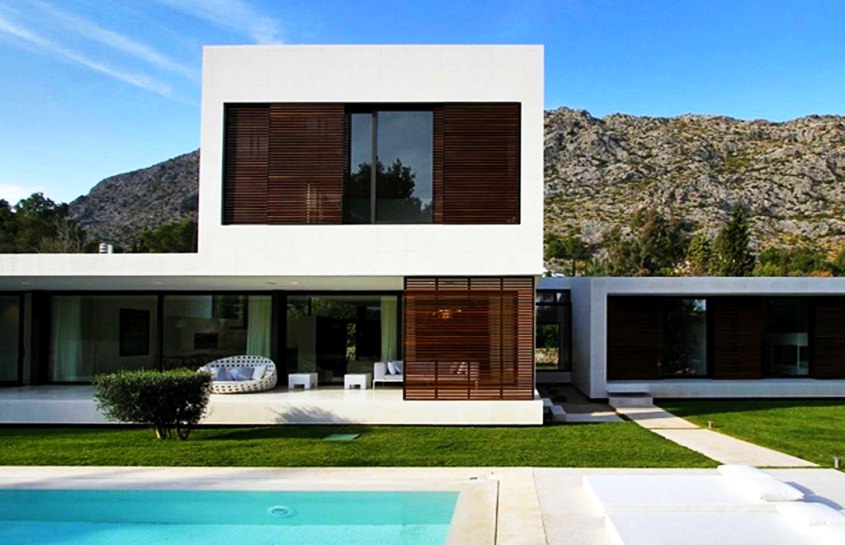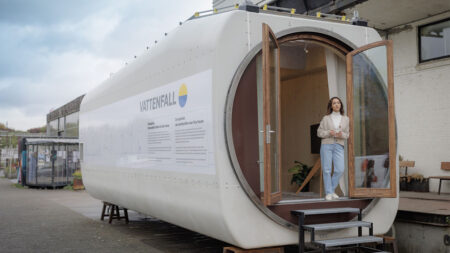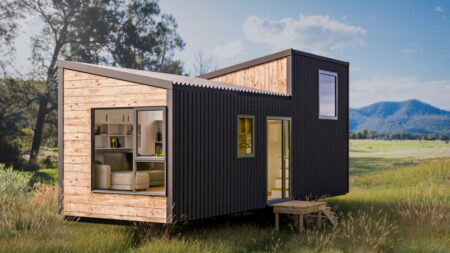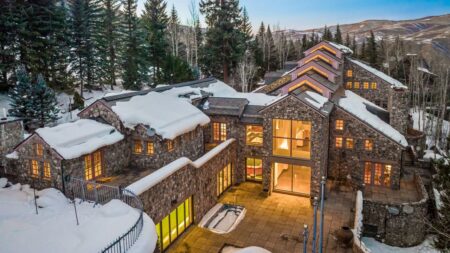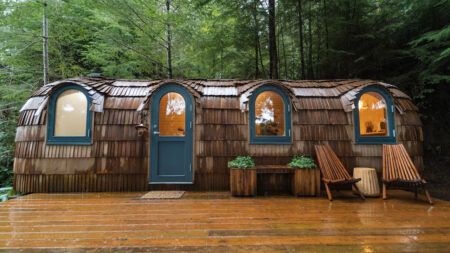The idea behind the minimalist movement is to reflect, in the housing and decoration industries, the concepts expressed in the art form bearing the same name. It involves a careful selection of every item in the house; each element is carefully selected for a purpose and look without losing minimalism.
#1 Reduction to what is essential
The first characteristic of the modern minimalist house design is a definite reduction to what is essential. In each aspect of the house design, there is no fuss or no muss. The forms are straight, clean, lean, and simplistic. From the exterior, a minimalist house looks aseptic with minimum decorations. Large, uniform, homogenous walls or windows cover large surfaces on the outside.
Despite carrying straight lines with least decoration elements, the house doesn’t look dull, thanks to façade engineering. Straight lines, right angles, monochromatic colors, such house designs often replicate simple geometric figures such as cubes or rectangular prisms.
#2 Clutter-free
Inside the minimalist house, the concept of simplicity continues. The minimalist house is not cluttered. There is furniture only needed to suit the lifestyle of its inhabitants. It represents a reduction to what is essential, creating a feeling of space and emptiness in places that look much bigger than they are.
#3 Simple interior décor with light colors
The interior décor is simple: Aside from its barren walls and floors, the minimalist house is painted in simple colors that associate well with nature and are pale rather than dark. Think of light beiges or subtle greys. White is also a good choice. No Knick knack cluttering bookshelves, no colorful art paintings on the walls. The décor is carefully selected to instill peace and order in both residents as well as guests.
#4 Sustainability
Often associated with sustainability, minimalist houses are generally set in nature, close to water. They also feature characteristics like green roofs or indoor gardens. Many of them are self-sufficient, producing their own electricity.
#5 Let the natural light come in
Use of natural light is part of the concept of the minimalist house. Wanting to reduce the carbon footprint of its owners, it needs to save on heating and lighting costs. This is why many minimalist houses have large windows or oversized solar panels.
With the incessant increase in population and environmental strains, minimalist housing offers a solution to people who still wish to have their own place while doing their bit to save the planet. Using less space, less electricity and lesser existing resources help reduce the number of impulsive purchases based on emotion rather than rationalization and need. By adopting a minimalist lifestyle, individuals are setting an example for society, showing the importance of thinking before buying or consuming.
Furthermore, in many constructions, minimalist houses use recycled or reused materials to avoid producing more consumable, disposable products. Finally, the movement is seen in the popularity of tiny houses that are popping like mushroom everywhere. The concept of minimalism goes beyond houses and decorations; people apply similar strategies to their wardrobe, fashion, etc. A trend that seems to be here to stay.
Follow Homecrux on Google News!
